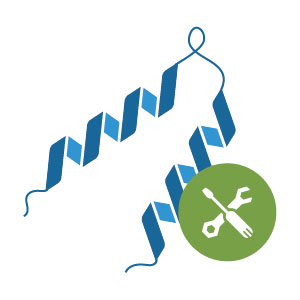The focus of pharmaceutical and biotech research has seen a significant shift in recent years. Many research teams are no longer driving towards building small molecules, but are instead focused on designing new protein-based therapeutics. Protein engineers at these organizations are often responsible for the structural design of target molecules as well as the experimental protein production and characterization of their designs.
To support this work, protein engineers need biologics software tools to capture details about molecular components such as proteins, antibodies, plasmids and cell lines, as well as the detailed steps of the development process. Biologics LIMS provides an easy to use system for centralizing this information and additional tools to help facilitate protein design including:
Uniqueness Verification
There are a number of entities that might be critical for a research organization to register in a bioregistry. These could include:
- Protein Sequences
- Nucleotide Sequences
- Molecules (ex: Antibodies)
- Plasmids
- Cell Lines
Each of these entities is checked for uniqueness when they are registered in LabKey Biologics. This prevents dirty data caused by duplicate records and reduces duplicate work for protein engineers. Uniqueness checks are in place for all entity types, whether you are registering a single sequence or a molecule composed of multiple protein sequences.
Uniqueness checks are also run on data auto-registered during the import of a GenBank file. In that case, LabKey Biologics will register plasmids during the import of a GenBank file, but also auto-register any regions that translate to protein sequences. If a protein sequence already exists, the system will register only the relationship between the plasmid and that protein sequence, not create a new sequence.
Classification by Protein Engineers
LabKey Biologics includes a classification engine that can identify, predict, and calculate various characteristics of registered molecules. This saves protein engineers valuable time manually assigning classifications.
The system automatically detects many regions and features of protein sequences including leader sequences, variable regions, constant regions, and CDRs. LabKey Biologics can also be trained to recognize additional sequence classifications, for example, by registering a leader sequence as a “Leader” within the system, it will recognize future leader sequences that match it.
LabKey Biologics can also recognize heavy chains and light chains and predict their type, based on the amino acid sequence of a registered protein, as well as the isotype of the overall antibody.
For all of these classifications, whether LabKey Biologics is detecting subsequences on the amino acid sequence or the type of overall sequences, the protein engineer can always override the classification engine if the prediction is incorrect.
Integration with Other Systems
Often times, protein engineers are using another application to design proteins or plasmids. LabKey Biologics makes it easy to bring this data into the system, either via APIs or by bulk upload. Regardless of the registration method, the same classification and uniqueness checking features apply to all registered entities.
To see this functionality in action, request a demo!
